Newtongrange
The making of Scotland's largest pit village
John Furnevel
Background
Coal production in the UK reached its peak in the second decade of the 20th century during the period leading up to the outbreak of World War 1. Since that time, with the exception of a post-nationalisation upturn in the late 1940s, the industry has seen a gradual but steady decline.
The last deep mine in Scotland, Longannet Mine in Fife, closed in 2002, while deep mining in the UK came to an end completely in 2015 with the closure of the superpit Kellingley Colliery, North Yorkshire.
At the time of writing (October 2019) a number of opencast workings still exist in various parts of the country, although there are currently government proposals aimed at phasing out all UK coal fired operations by 2025.
The railways and the coal industry, have always had a close association, from the days of the early horse drawn tramways, through to the advent of the modern MGR block trains supplying major power stations.
This article focuses on the rise and fall of the coal industry and its associated railways in one particular area of the Midlothian coalfield, centred around the village of Newtongrange.
The Lothian Coal Company
While coal had been mined in and around Newtongrange for countless years, the most radical and far reaching changes affecting the local industry were to take place towards the end of the 19th century with the advent of the Lothian Coal Company.
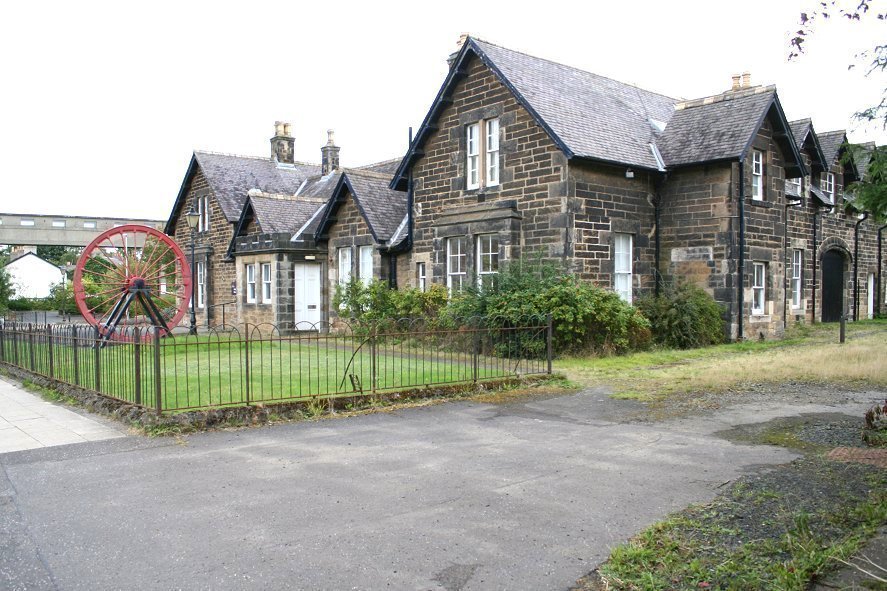
Newtongrange [Village]: The former headquarters of the Lothian Coal Company still stands on the east side of the A7 opposite the entrance to what is now the National Mining Museum. The building now houses the museum's offices, library and archive. John Furnevel 05/09/2019
Formed during 1890 under the chairmanship of the 9th Marquis of Lothian, the company was set up specifically to exploit the rich reserves in the Newtongrange area using the most modern methods available at the time.
The managing director appointed by the new company was Archibald Hood, who had acquired Whitehill Colliery at nearby Rosewell in 1860, having previously developed a thorough knowledge of the coal mining industry through his extensive work on previous projects in the coalfields of South Wales.
Hood was also a man who had gained a reputation for showing genuine concern regarding the welfare and well being of his workforce. This had recently been illustrated through the provision of modern miners' rows with gardens at Rosewell.
Such provision would be seen on an even larger scale during the subsequent expansion of coal mining activities at Newtongrange.
Later that same year work began on the sinking of a major new pit on a large open site to the south of the village.
In addition to the untapped coal reserves in the area, two other key factors had been considered in determining the siting of the new pit.
First was the proximity of the old Lingerwood Pit, to which underground links could be established relatively easily. This would provide the new pit with a ready made second shaft – a statutory requirement by that time following new regulations covering ventilation and general safety within the coal mining industry.
Another key consideration had been the proximity of the North British Railway's Edinburgh – Carlisle line. The coal volumes envisaged made easy access to the national rail network crucial in providing links to key locations across the country – not least the docks at Leith, some 17 miles to the north.
The NB line ran alongside the western boundary of the proposed site, enabling a direct rail connection to be made from the new company sidings which were to be laid alongside. This would enable closure of the old exchange sidings in use at the time, which were located on a cramped and inconvenient site at the east end of Newbattle Viaduct.
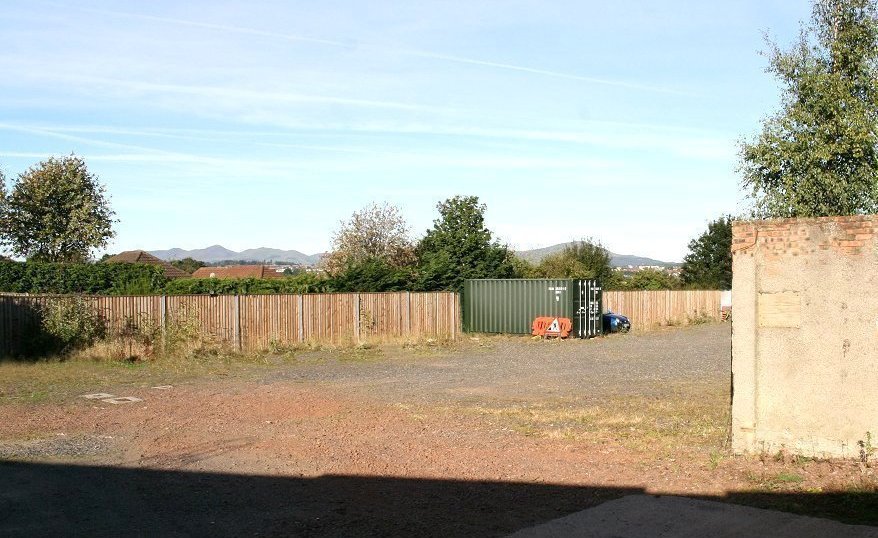
West Bryans Siding: The site of the former exchange sidings at the east end of Newbattle Viaduct seen from the gated entrance off the B6482 Dalhousie Road in 2019. The sidings fell into disuse prior to WW1 following the introduction of improved facilities at the nearby Lady Victoria Pit. Apart from one or two old containers the area is almost clear. A fairly recent addition is the wooden fence along its south western edge. This appeared in 2015 during construction of the Borders Railway, which now runs just beyond. See image [[71036]] John Furnevel 08/09/2019
The board of the Lothian Coal Company agreed unanimously to proceed with the plan for the new pit, which they also agreed to name after Lady Victoria Alexandrina Montagu Douglas Scott, the wife of the company chairman.
Production at the Lady Victoria Pit commenced in 1895.
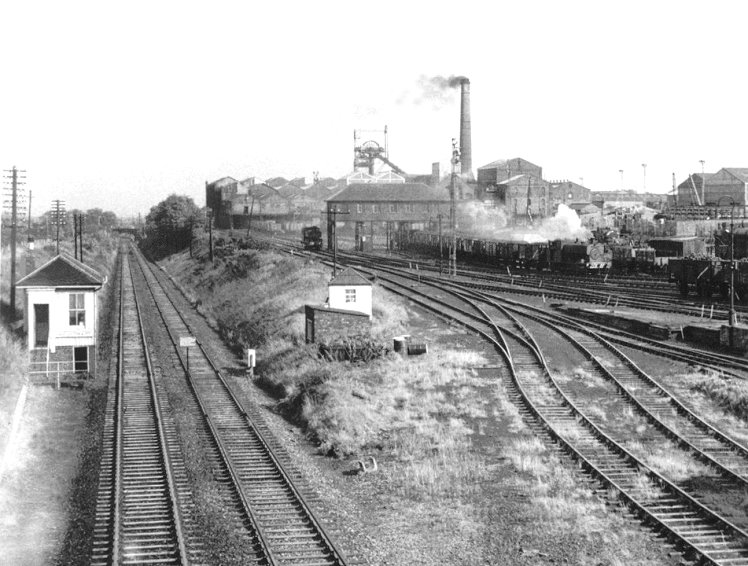
Lady Victoria Pit Signal Box: The surviving section of the Waverley line passing Lady Victoria colliery, Newtongrange, in 1971. View north towards the site of Newtongrange station. John Furnevel 06/04/1971
Mineral Lines around Newtongrange
Approaching the end of the 19th century, coal mining in the Newtongrange area was being carried out at Lady Victoria and Lingerwood Pits to the south, together with Bryans Pit, at the north end of the village.
At that time these and several other surrounding industrial locations were served by a network of old mineral lines.
Branches from Lady Victoria and Lingerwood pits met at a junction to the south of Lingerwood Road before running north for three quarters of a mile to a point just short of Suttieslea Road.
The line ran through open countryside initially, but the next 20 years would see the village expand, with new miners' rows forming First to Eighth Streets appearing on the west side of the line. The railway would be separated from the new housing by a stone wall with a parallel public pathway on its west side.
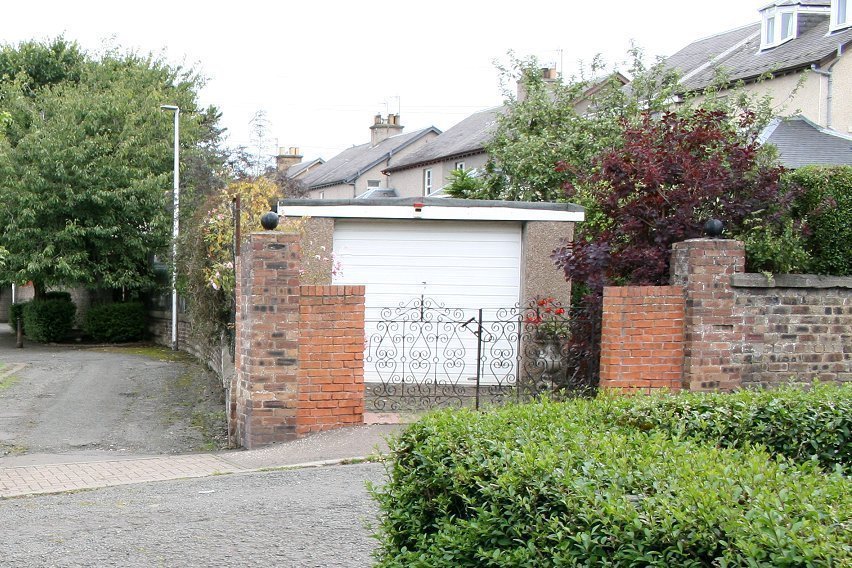
Lingerwood Road Level Crossing: Looking north over Lingerwood Road, Newtongrange, in September 2019, with the houses of Lothian Terrace on the right. A level crossing existed here with the line from Lady Victoria and Lingerwood pits running between the the old brick gateposts (topped with the black ball finials) and on through the site currently occupied by the garage. The old trackbed beyond is today occupied by gardens and farmland, before becoming recognisable once more between Sixth and Eighth Streets. The parallel Easthouses Tramway passed below the same road some 50 yards off to the right [[72194]]. John Furnevel 05/09/2019
From here the line split three ways.
Firstly a branch turned off sharply to the south west and ran parallel with Bryans Road to a junction at the top of Main Street.
Here a spur turned north across Main Street to enter the premises of the Newbattle Brick and Tile Works (a site later occupied by the local gasworks).
The main branch then continued west, also crossing Main Street, to reach the old exchange sidings at the east end of Newbattle Viaduct.
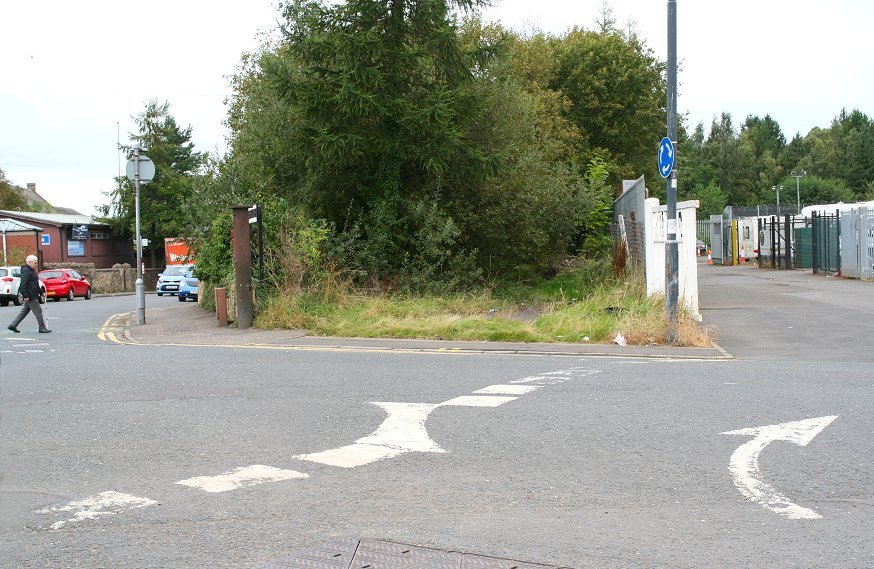
Newton Grange Level Crossing: The site of the level crossing at the top of main Street, Newtongrange, once used by the line into the Lothian Brick & Tile Works. The works seems to have closed prior to 1900, around the time a new brickworks appeared further south alongside Lingerwood Pit. A Gasworks later occupied the site until closure in the mid 1950s. Today a large garage / vehicle hire operation stands nearest the road with playing fields beyond. A second level crossing stood just to the left, taking the branch on to the old exchange sidings. One legacy of these twin level crossings is the strange double roundabout that continues to confuse drivers using the road junction today (not just me!). John Furnevel 05/09/2019
Back at Suttieslea Road a second shorter branch turned east to serve Bryans Pit, following which it continued to a lime works and quarry located just beyond.
The line north of Suttieslea Road carried on for a further one and a quarter miles, passing old mine workings and quarry sites, before reaching its northern limit at Shaw's Coal Depot . The depot, which stood on the eastern edge of the Midlothian county town of Dalkeith, provided road access from the A6106.
The Early Years
Prior to the sinking of the new pit the vast majority of the coal produced in the area came from Lingerwood, where coal mining operations had been carried out from as early as 1798 (the 'old engine pit') with the colliery being largely rebuilt in 1839.
The coal produced at Lingerwood was subsequently washed and screened using the new modern centralised facilities at the Lady Victoria site.
Other workings in the area included the smaller Bryans Pit, which had been producing coal since 1838. Operations here were gradually wound down and finally ceased around 1910, coincident with the opening of the new Lothian Coal Company's drift mine just over half a mile further north.
The Easthouses area, which had seen various smaller workings over the years, had been identified by the company as another potential development site.
A modern drift mine was opened here in 1909, around the time of closure of the old Bryans Pit, with the new location officially named the Easthouses Extension Pit.
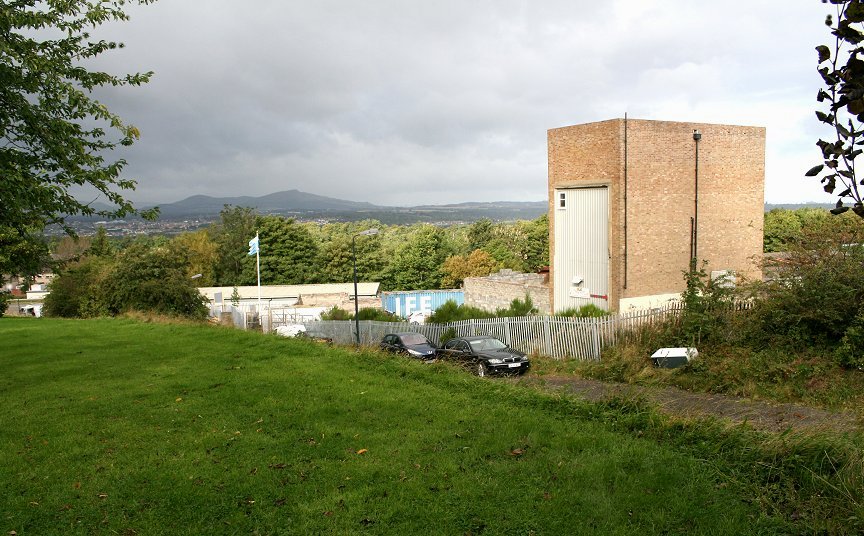
Easthouses Extension Pit: Looking west over the site of the Easthouses Extension Pit in September 2019. Closed down in 1969, the location has since become Easthouses Industrial Estate. The tall building was constructed by the NCB as part of the modernisation programme in 1953. It contained the water tank, boilers etc supplying the new pithead baths. John Furnevel 11/09/2019
The extraction system at Easthouses involved rakes of loaded coal tubs being wound up 1 in 2 inclines to the pithead. The loaded tubs were then surface-hauled a further one and a half miles to the washing and screening facilities at Lady Victoria using a specially constructed light narrow gauge tramway utilising what was described at the time as an 'endless rope haulage system'.
The Interim years
From the end of the first decade of the 20th century through to nationalisation in 1948 many further changes took place in the Newtongrange area.
Early developments around Lady Victoria had included new sorting and holding sidings, together with new exchange facilities alongside the main line. Further expansion was later necessary to cater for additional traffic arriving from Easthouses.
Creation of the new disposal point nearer the main source of production had enabled greater flexibility and handling efficiency to be achieved than had previously been possible at the original cramped site to the north.
Provision of these improvements was considered crucial in avoiding costly delays and bottlenecks at the shipping stage, given the ever increasing volumes of coal being handled.
Unfortunately, while the improvements implemented by the Lothian Coal Company resulted in much greater efficiency at the disposal point, they added considerably to the difficulties already being experienced by the North British Railway.
Rail delays were becoming more frequent as volumes increased, in particular on the 'coal conveyor' route between Newtongrange and Leith Docks, sections of which were shared with lines already handling growing passenger volumes as well as other freight.
It was these delays, coupled with ongoing dissatisfaction with the NB pricing policy generally, that resulted in the raising of the parliamentary bill of 1912 on the part of a consortium formed by the coal owners (of which the Lothian Coal Company was one of the main proponents) seeking government approval for the construction of a dedicated private railway linking the pits directly with the docks at Leith.
The bill eventually fell, but only after firm undertakings were given by the North British Railway that led to the opening in 1915 of what became known as the Lothian Lines. See separate Railscot article Lothian Lines .
Nationalisation and beyond
A number of changes took place in the Newtongrange area following nationalisation of the coal industry in 1948.
These included the early abandonment of the 'endless-rope' haulage system on the Easthouses Tramway, with 3'6†gauge NCB diesel locomotives taking over responsibility for the transport of coal between Easthouses and Lady Victoria.
Other changes at Easterhouse involved modernisation of the pithead facilities, including the construction of baths. These were completed in 1953.
Both Lady Victoria and Lingerwood Pits also saw the opening of modern pithead baths the following year, when a shared facility was built on a site midway between the two.
Both pits were connected to the new baths via enclosed and heated walkways. In the case of Lady Victoria the walkway spanned the A7.
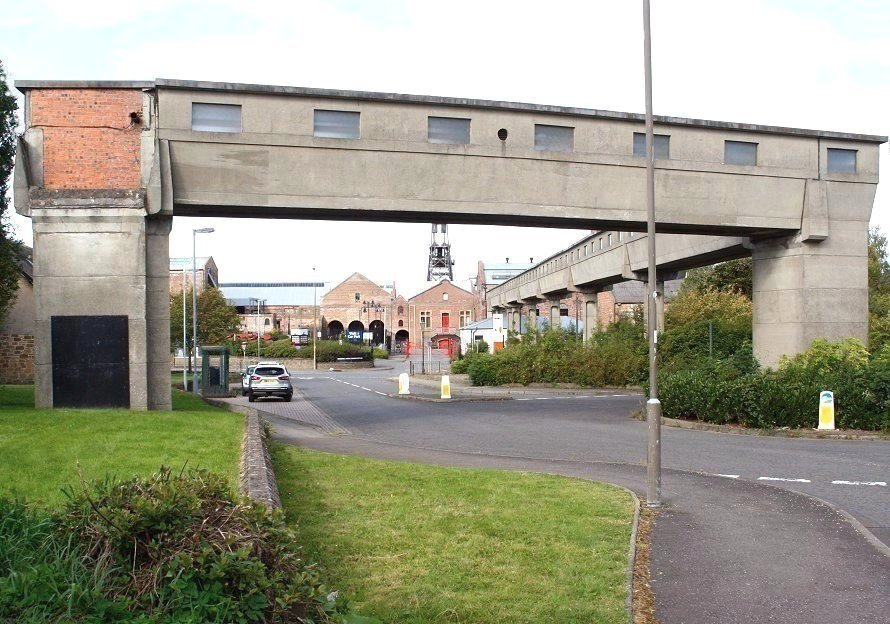
Lady Victoria Colliery: The remains of the enclosed walkway opened by the NCB in 1954 to link Lady Victoria with the new pithead baths behind the camera. The baths are long gone with the site now a modern housing cul-de-sac named Colliery View. The original line (a temporary way) left the pit via what is now the main museum entrance opposite, crossed the A7 on the level and passed to the right of the camera position. It then turned north and joined the line from Lingerwood Pit just before passing over a level crossing on Lingerwood Road. John Furnevel 01/09/2019
However, despite further modernisation, increased mechanisation and improved productivity across the industry the overall demand for coal continued to fall.
The peak annual production level of 280 million tons seen during the boom years preceding World War 1 had fallen to half that by the end of the 1960s.
In just over 20 years following nationalisation of the industry almost 700 pit closures had taken place across the UK.
In the Newtongrange area itself Lingerwood pit closed in 1967, Easthouses followed two years later and, finally, Lady Victoria ceased production in 1981.

Lady Victoria Pit Signal Box: Lady Victoria - The End. John Furnevel //1984
Other Railways around Newtongrange
To the north of Lady Victoria, between the pit and the A7 bridge, was the site of the Dean Oil Works, served by a rail link from the NB main line. The works, which seems to have appeared during the 1890s, around the same time as the new pit, was involved in the extraction of oil from coal.
Little further detail is known about the operation, which seems to have closed down at some point between the wars, although one of its original buildings survives today on what is now the 2015 Newtongrange station site.
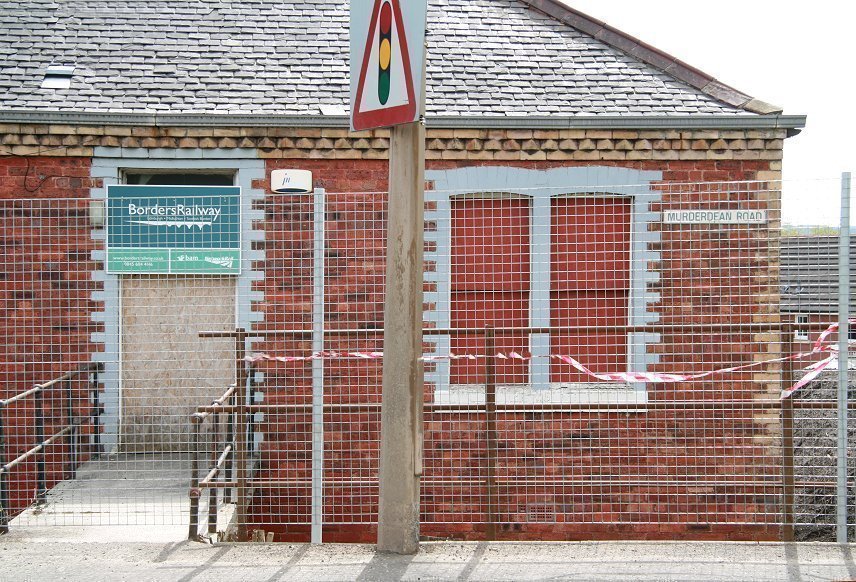
Newtongrange: Detail showing part of the former offices of the Dean Oil Works (the old rail served yard of which is now occupied by Newtongrange station) seen here from what was once the street level staff entrance from the A7 Murderdean Road. The old building has since been refurbished, refitted and reopened as a community hub, incorporating a cafe, known as 'The Sidings'. Photographed in May 2013, prior to construction of a stairway to the right which now provides pedestrian access to the new station. John Furnevel 22/05/2013
While the North British Railway's line from Edinburgh had been opened through Newtongrange in 1847, the village at that time had not been seen as justifying its own passenger station. This was remedied in 1908 with the opening of a new station to the north of the A7 bridge.
The station was eventually closed along with the Waverley Route in January 1969.
In 1942 the government set up the Ministry of Fuel & Power (later Ministry of Power) to take charge of coal production, supplies, prices and rationing. The Ministry authorised a large depot at Butlerfield on the west side of the main line opposite Lady Victoria. This wartime depot, linked to the main line, functioned as a central coal stocking area and disposal point dealing with coal brought in from non-rail served sites.
The facility was taken over by the NCB in the early 1950s. Activity reduced gradually thereafter with operations ceasing completely around the end of the 1960s.
Newtongrange Today
While the village has now grown to a population of approximately 5,000, much of the central part of the village, with its parallel numbered streets, survives intact. A reminder of the days of the Lothian Coal Company and the period when Newtongrange became the largest pit village in Scotland.
Various relics and artefacts relating to the former coal mining industry can still be seen in and around the village, with the Lady Victoria itself now the site of the National Mining Museum.
This 5 star visitor attraction opened to the public in 1984.
After 46 years without a station, following the 1969 closure of the Waverley Route, rail services were restored to Newtongrange in 2015 with the opening of the Borders Railway.
The new station occupies the site to the south of the A7 once occupied by the Dean Oil Works.

Newtongrange: 'Hello there! It's good to be back!' The first scheduled passenger train on the Borders Railway calls at Newtongrange on 6 September 2015 on its way from Tweedbank to Edinburgh. John Furnevel 06/09/2015
The new station on the Borders Railway opened for business on the morning of Sunday 6 September 2015.
